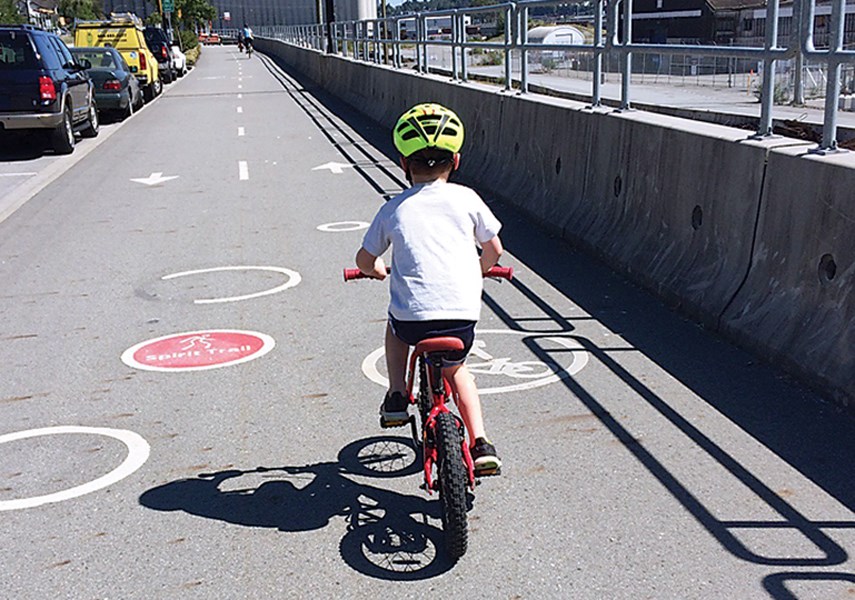His excitement caught my eye.
Pure kid delight. A four-year old whizzing down a sloped section of the Spirit Trail on his first pedal bike. He was grinning so hard I could see his tonsils. I couldn’t help but beam myself. He was in the moment all right. A concerned looking mom was trotting behind at some distance, unable to keep up.
I could relate to how that kid felt. The sense of movement and speed. The feeling of freedom. The noise of the wind flowing past his ears. Mom in the distance....
Of course, I could relate to the worried but proud Mom as well.
Humans are programmed genetically to know how to walk and even run. But cycling is not in our DNA. Getting the hang of riding a bike is a milestone most of us experienced between age eight and 12. These days, it seems, kids learn how to ride a two-wheeler very early on. And some new thinking has changed the way to teach them.
To start with, a child’s first bike is likely to be a “balance” or “glider” bike (kinda like getting your “L” for the bike crowd). These bikes have two wheels and a brake, but no gears and no pedals. Suitable for children aged 18 months to two years, your local bike shop can help you find the right size. Because kids grow quickly, make sure you get one with an adjustable seat height.
The key cycling skill kids learn on a glider bike is how to balance on two wheels. Pretty important. They also learn how to steer and stop with brakes. It’s amazing to watch what toddlers can do on these bikes after a bit of practice. Uphill? No problem. Gravel? No problem. Curb jumping, gliding, and maneuvering around objects? No sweat. Dad! Let’s go to the bike park.
Parents can transition their child from a balance bike to a pedal bike as young as age three and a half, but more usually between four and five years old. If he or she has been riding a balance bike for a while and exhibits mastery and is pestering you for pedal bike, it’s worth a try. You’ll know they are not ready because their feet won’t consistently contact the pedals and their legs won’t spin forward properly. No problem, keep them on their first love and try again later.
To help them make the transition to a pedal bike, pick a safe (removed from traffic) flat, paved spot. A school parking lot after hours is a good bet. Grass might seem attractive, but it’s harder to gain momentum.
Help the child onto the bike standing behind her and clamping the rear wheel between your knees. Position her feet on the pedals and, from behind, hold her under the armpits to provide support. Get her to turn the pedals and push gently. The bike will move and you can run behind providing support when necessary, correcting big wobbles using the “armpit control” method. A few 30-minute outings like this, and your daughter will be pedalling fine (welcome to your “N”).
What next? Well, this is the North Shore – original home of mountain biking. Mountain bike lessons and camps for tots abound. After a couple of years on trails like Mushroom, you can bet your seven-year-old will be corkscrewing down Icy Hole of Death with a huge grin radiating across her face.
Here at Pedal Pushers we are all so old we can barely remember learning how to ride. But none of us forget the excitement, the feeling of freedom! Once you know how to ride a bike, you never forget.
The North Shore Pedal Pushers are Heather Drugge and Antje Wahl. The guy who makes the column readable, Dan Campbell, prefers driving. See – we can all work together.




